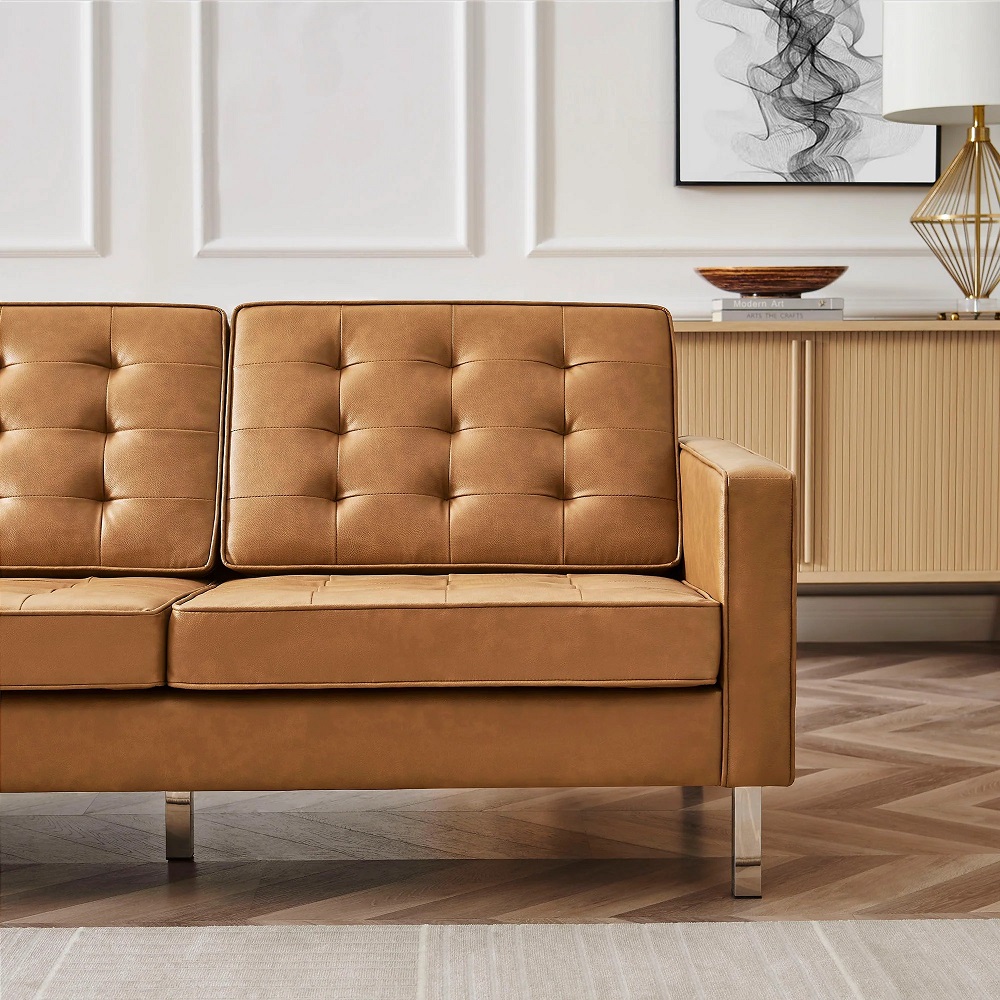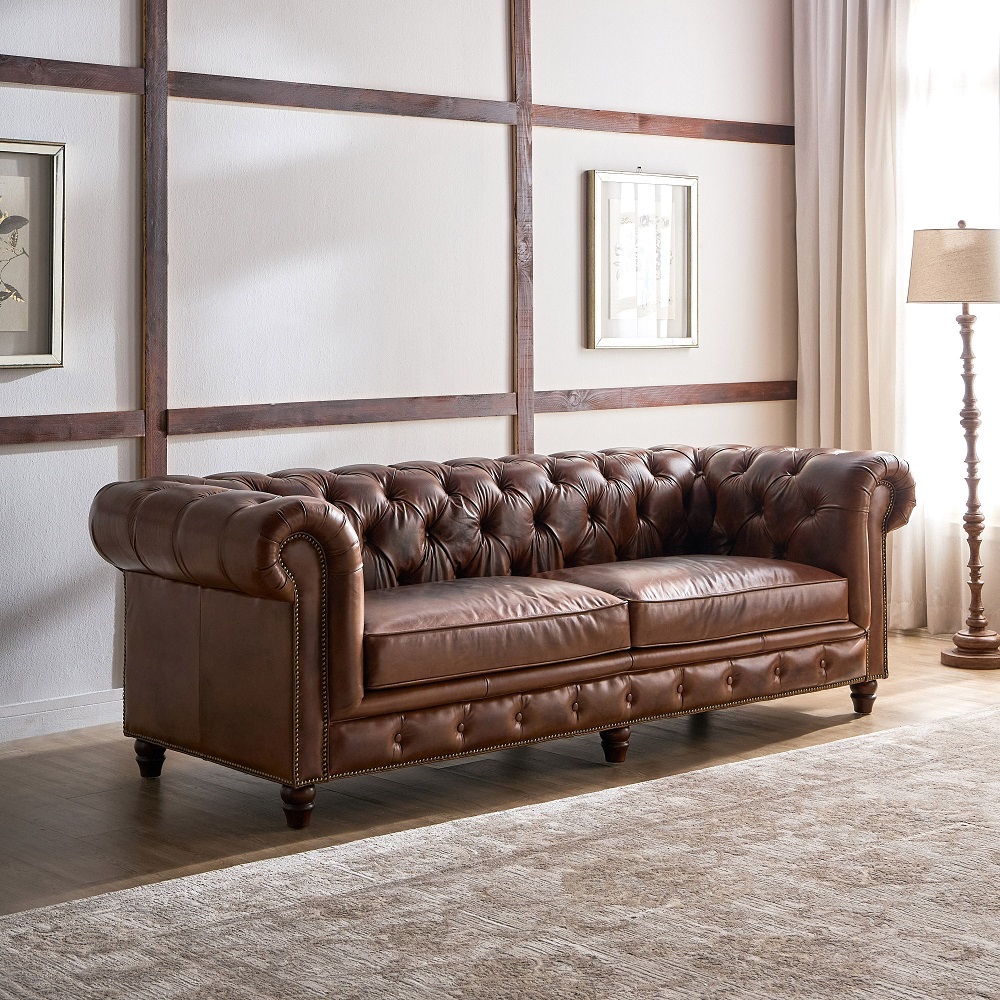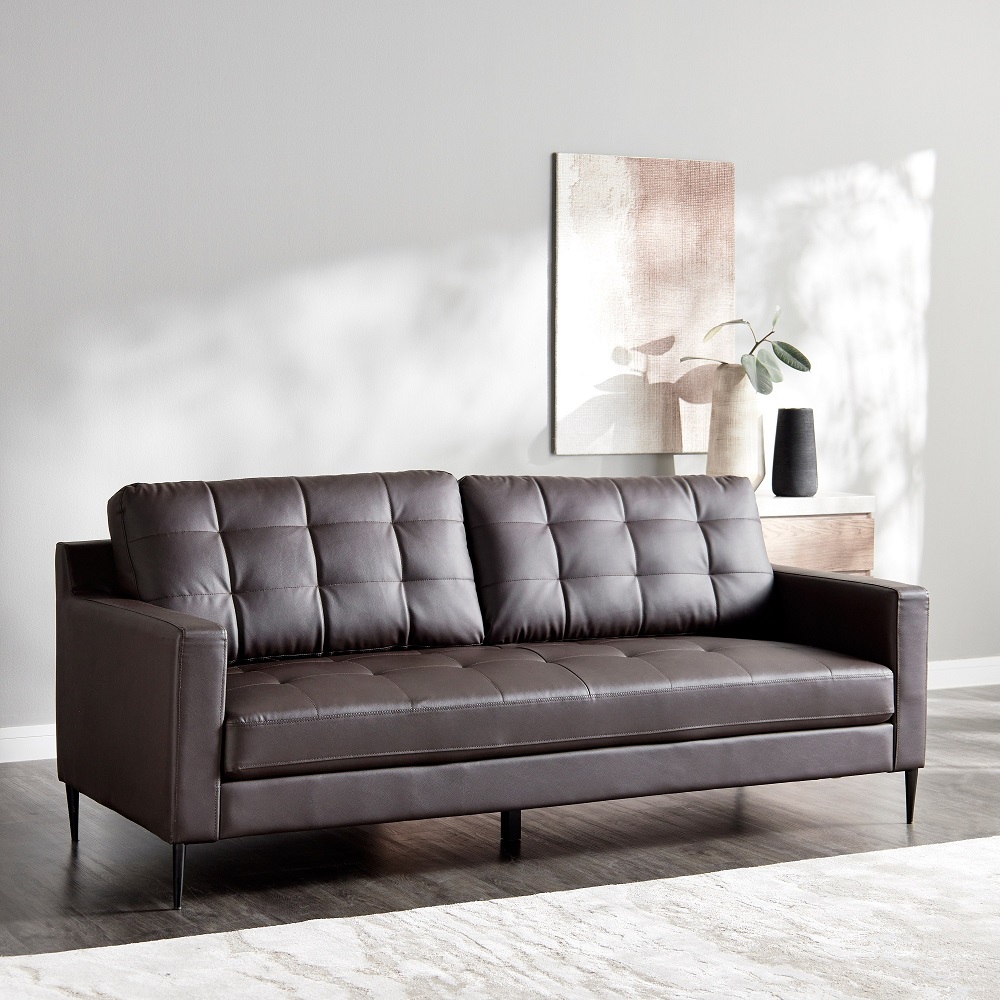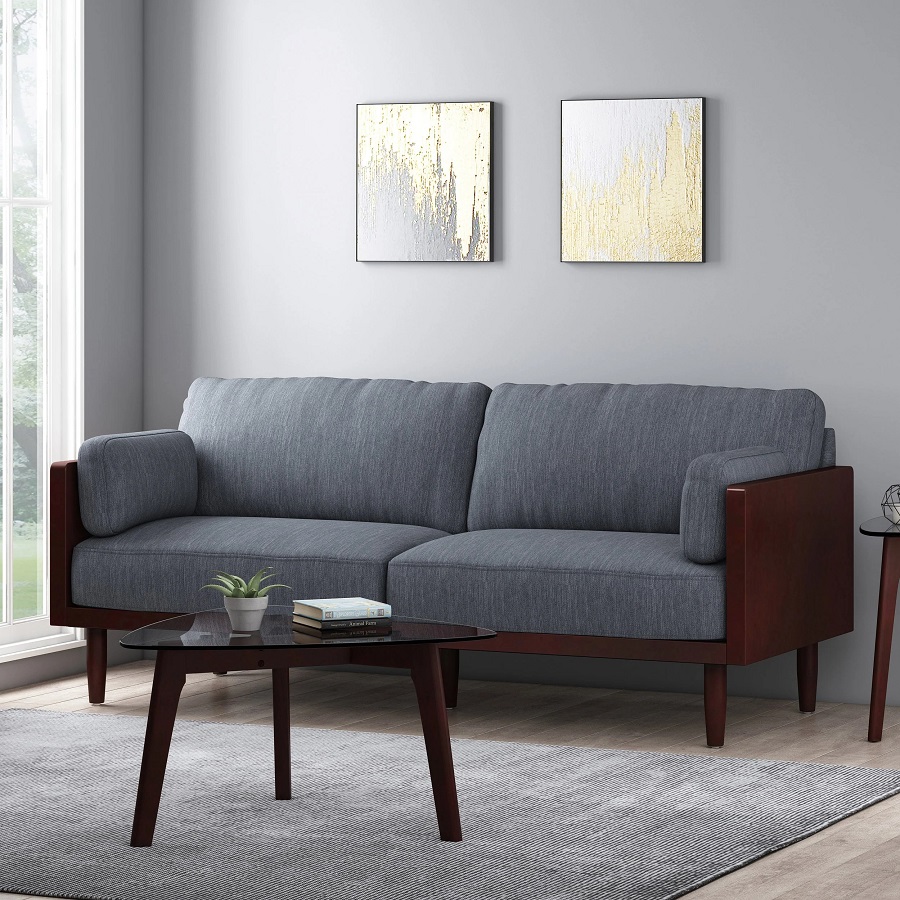The Basics of Leather Sofa Care
Taking care of a leather sofa is key to its longevity. Simple routines can keep it looking new. Start with a soft, clean cloth. Gently wipe the surface to remove loose dust and dirt. This step avoids scratches and maintains the sofa’s health. Avoid harsh chemicals or abrasive tools as they can damage the leather.
Next, check for spills or spots. Attend to them quickly to prevent stains. Use a damp cloth and wipe gently. Do not soak the leather as it can cause more harm than good. Also, do not use colored cloths. They might transfer dye onto your leather sofa.
For deeper cleaning, select a leather cleaner suitable for your sofa type. Read the labels carefully. Test the cleaner on a small, hidden area first to ensure no harm. Always follow the instructions. This way, you keep the leather in prime condition and avoid costly mistakes.
A leather sofa thrives with constant care. So, make it a habit to clean and check your sofa regularly. Deal with minor issues before they become bigger problems. Treat your leather sofa with respect, and it will serve you well for years to come.

Cleaning Your Leather Sofa
Proper cleaning is crucial for the longevity of your leather sofa. Regular and careful cleaning removes dirt and prevents damage.
Vacuuming and Dusting
Start by vacuuming your leather sofa using a soft brush attachment. This removes crumbs and dust without scratching the leather. Remember to vacuum in the crevices where dirt accumulates. After vacuuming, use a microfiber cloth to dust the surface. Do this gently to avoid scuffs.
Stain Removal Techniques
Act quickly when spills occur. Blot the spill with a clean, dry cloth; don’t rub as this can spread the stain. For stubborn stains, use a specialized leather stain remover. Test it on a hidden area first. Follow the instructions for the best results. Never use harsh household cleaners.
Using Leather Cleaning Products
Choose a cleaner designed for leather sofas. Apply a small amount to a soft cloth and wipe the sofa in circular motions. Avoid over-wetting the leather. Wipe off any excess cleaner with a dry cloth. Your leather sofa will look clean and refreshed.
Conditioning Your Leather Sofa
After cleaning your leather sofa, conditioning is the next crucial step. Leather is a natural material. It needs moisture to stay supple and avoid cracking. Think of conditioner as a moisturizer for your leather sofa. It helps preserve the leather’s beauty and elasticity.
The Importance of Leather Conditioner
A good leather conditioner contains natural oils. These oils replenish the leather’s own oils, lost over time. Without conditioning, leather can dry out, become brittle, and eventually crack. Regular application of a conditioner extends the life of your sofa. It also gives it a soft, comfortable feel and a healthy sheen.
How to Apply Leather Conditioner
Applying leather conditioner is a simple process. First, ensure your sofa is clean. Then, use a soft cloth to apply the conditioner in a circular motion. Do this gently. Take care not to over-apply the product, as this could make the leather too soft. After a few minutes, buff with another clean cloth to bring out the shine. Allow your sofa to absorb the conditioner before using it again.
Remember to test the conditioner on a small, hidden spot first. This checks for any adverse reactions. Regular conditioning, about every six to twelve months, will keep your leather sofa looking its best. Always check the manufacturer’s recommendations for the specific type of leather sofa you own.
Protecting Your Leather Sofa
After cleaning and conditioning, you must also protect your leather sofa from harm. This adds to its lifespan and maintains its appearance.
Keeping it Away from Sunlight and Heat
Direct sunlight and high temperatures can damage leather. They may cause fading and drying, reducing your sofa’s durability. Place your leather sofa away from windows or use window treatments to block intense rays. Keep it away from heat sources like radiators or vents, which can dry out the leather.
Preventing Scratches and Tears
Scratches and tears not only affect your sofa’s look but can also lead to more serious damage. Encourage a no-shoes policy and keep sharp objects away. Teach pets to stay off the sofa, or use protective coverings if needed. Handle the leather gently when moving or cleaning your sofa to avoid accidental damage.
With proper protection, your leather sofa will continue to be an elegant and comfortable feature in your home for many years.

Periodic Maintenance for Your Leather Sofa
Caring for your leather sofa also involves periodic maintenance. This helps to keep the leather in its best condition over time. Here’s how you can schedule regular cleanings and determine when to seek professional care.
Scheduling Regular Cleanings
Consistency is crucial when it comes to maintaining the luxurious look and feel of your leather sofa. Mark your calendar for periodic cleaning sessions. Aim to give your sofa a basic clean every two weeks. Use a soft cloth and gentle leather cleaner to keep the surface free from dust and oils.
Once every three to six months, set aside time for a thorough cleaning. This includes dusting, vacuuming with a soft brush attachment, and using leather cleaning products. After these cleanings, always apply a leather conditioner to keep the sofa supple and shiny.
Remember to adjust the schedule based on usage. If your sofa sees heavy daily use, or if pets and children are around, you might need to clean and condition it more often.
When to Seek Professional Leather Care
Sometimes, your leather sofa may need more than your regular care routine. Deep stains, tears, and loss of color are signs that it’s time for professional help.
Seek professional leather care if your sofa:
- Has stubborn stains that homemade solutions cannot remove.
- Shows signs of wear, such as cracking or sagging.
- Needs repair for rips or tears.
Professionals have the right tools and expertise to restore your leather sofa. They can clean, repair, and refresh your furniture without causing further damage. If you notice issues, don’t wait. The sooner you act, the better the chances of restoring your sofa’s original beauty.
Follow these periodic maintenance tips, and your leather sofa will remain an inviting, durable centrepiece in your home for years to come.
Common Mistakes to Avoid in Leather Care
Caring for a leather sofa requires caution to avoid common missteps that damage the material. Avoid the following errors to ensure your sofa remains in top condition.
Using Harsh Chemicals or Abrasives
Steer clear from harsh chemicals, abrasives, or household cleaners not designed for leather. These can strip the natural oils and lead to cracking and fading.
Overlooking Spills and Stains
Address spills and stains immediately. Letting them sit can make them harder to remove and may cause permanent marks.
Excessive Sunlight and Heat Exposure
Keep your sofa away from direct sunlight and heat. Extended exposure can dry out leather and cause discoloration.
Skipping Regular Cleaning and Conditioning
Don’t skip routine cleaning and conditioning. Neglect can result in dried out, brittle leather that’s prone to damage.
Using Incorrect Cleaning Methods
Always use a soft brush and microfiber cloth for cleaning. Avoid soaking leather with water, and don’t scrub stains harshly.
Neglecting to Test Products
Always do a spot test with cleaners and conditioners. Apply a small amount to a hidden area to ensure there’s no adverse reaction before treating the whole sofa.
Remember these points to safeguard your leather sofa from common care mistakes that could shorten its lifespan and hinder its beauty.

DIY Leather Sofa Care Tips
Proper maintenance of your leather sofas does not always require store-bought products. With a few household items, you can create effective DIY leather care solutions.
Homemade Leather Cleaners
Making a leather cleaner at home is simple and cost-effective. For general cleaning, mix equal parts of white vinegar and water. Apply the mixture lightly with a soft cloth, then wipe with a dry cloth. This removes surface dirt without harsh chemicals.
For conditioning, blend one part of white vinegar with two parts of linseed oil. Apply to leather, let sit for about 15 minutes, and then buff with a soft cloth. The linseed oil nourishes the leather, keeping it supple.
Emergency Leather Care Solutions
When quick action is required, it’s good to have easy leather care solutions. For urgent spills, blot immediately using a paper towel. Avoid wiping to prevent spreading the spill.
For sudden dryness or minor scratches, apply a small dab of coconut oil using your fingertip. Gently rub it in a circular motion, then buff with a soft cloth. Coconut oil acts as a quick conditioner, reducing the appearance of scratches and keeping the leather moisturized.
These DIY tips are handy for immediate leather sofa care. Using household products can save the day and your sofa’s appearance. Remember, for any homemade solution, it’s vital to test on a small, hidden area first, to prevent possible damage.










